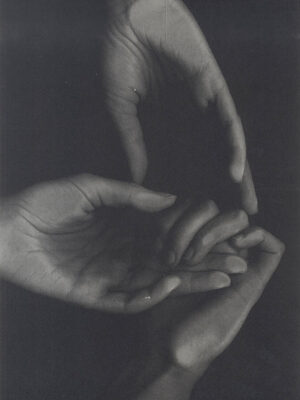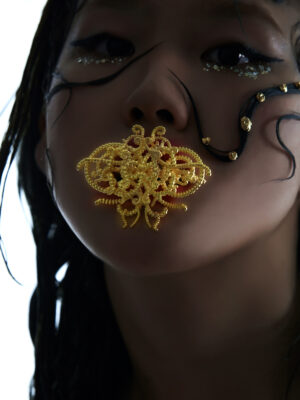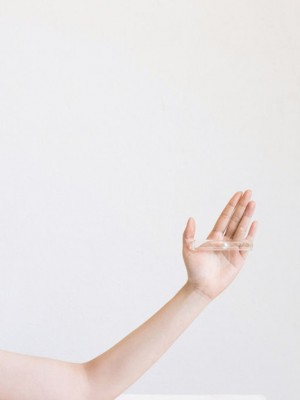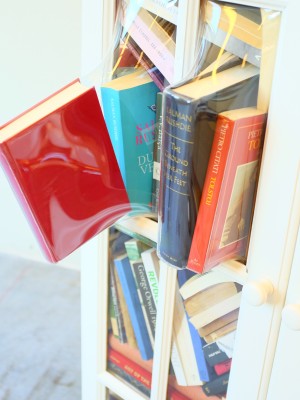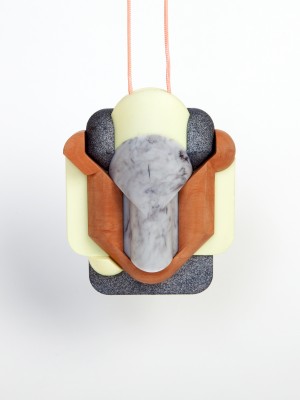Jewellery feels like something.
Jewellery satisfies parts of us that we cannot fully explain or understand, but it remains regardless– finding a place in most areas of life. It is so every-day that it can become unnoticeable. But there are moments when it moves into focus, when we engage with what jewellery is and why we have it. In whatever scenario jewellery is situated, it is undeniably a reference point of meaning and humankind. Marjan Unger addresses this in Jewellery Matters; she writes, jewellery is worn by people ‘to express their hope for a meaningful life’ (Unger and Van Leeuwen, 2017, p.521). Jewellery therefore is a signifier of something more than itself; it is playing a role in a grander tale than the sum of its parts. It represents and speaks into the events and relational connections we have through the value it transmits. To some degree or another we understand that jewellery is culturally, historically, socially, emotionally, and as a consequence, financially valuable (Unger and Van Leeuwen, 2017). So, whether ambitious or unassuming, jewellery can be the minor representations of the major messages within life.
‘The hand is thought of as the slave of action. But the slave of action is the master of expression.’ (Bridgman, 1920, p.13). The hands are the place we connect with each other and the world around us; they affiliate us to life and aid our participation with it. In Ways of Seeing John Berger writes of the tradition of oil painting that, ‘it defines the real as that which you can put your hands on.’ (Berger, 1972, p.88). It is exactly this viscerality of the hands and the real– the ability to touch and to see them in contact– that captures the atmosphere of my collection. In the normality of people and their hands, there is opportunity to acknowledge significance through this familiarity. There are common choices and common wearers, but nothing is ordinary, as C.S Lewis puts it, ‘there are no ordinary people’ (Lewis, 1942, p.9). Thus, using the hands as the location for my collection of rings enables a sense of commitment and substance within the familiar to be grasped.
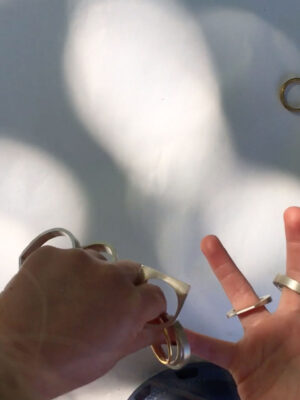
Jewellery has an innate association to the bodies that wear, own and give it. OF YOUR HANDS expounds on the narrative that jewellery embodies the physical and emotional connections we share as human beings. Consequently, my collection acts as iterations showing that jewellery can be a means of emotional transaction. Gerda Flockinger in conversation at Central Saint Martins (17.02.2020) told of how she gifted a ring to a friend, and her friend gave her a ring in return. This motion of jewellery between the two depicts the friendship they also experience. With these things in mind I gather inspiration and research directly from the encounters I witness as people live and move around me, telling stories through the non-verbal. I take photographs of natural interactions of even momentary touch and use these to acquire a sense of what it means to be in combination together. The photography of Anders Petersen (Fig. 1) characterises this honesty of people and their connections to each other and objects. Because the every-day person is of great influence on me, it is important that my rings can be worn by many people, irrespective of gender, age or ethnicity; as though my rings would permeate a cross-section of humanity and not only a fragment of the story.
Recognising that much of jewellery culture is about gifting, my work aims to symbolise union of many descriptions through the act of giving. Treating my rings like vessels destined for another ensures them as tools of communication and a measure of something more. At the wedding of Queen Victoria and Prince Albert in 1840, six dozen rings were presented to the chief guests, perpetuating the memory of the ceremony (Kunz, 1973, p.225). With my collection, I too would like to unite people in an experience through the act of giving– a preciousness that is passed on, remembered and retold. Gifting is not dependant on the receiver but the giver. So, in freely giving, jewellery becomes both ‘an emotive purchase’ (Liz Olver, in conversation, 29.05.2020) and an emotive catalyst.
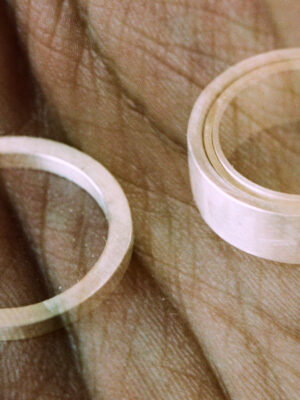
There is simplicity and minimal visual information present in the rings, not only because this is what comes naturally to me, but to allow the object and its movements to be the focus of what we see. Barcelona based jeweller Marc Monzó’s ‘Half Wedding Ring’ (Fig. 2) encapsulates this idea. Monzó’s design acknowledges the ‘classic’ and has a refinement and functionality that force a deeper engagement with the story telling capability of the jewellery. By producing my collection with a clean aesthetic, the extent of the meaning held and transmitted through these jewellery pieces can be grasped more clearly. My designs fixate on the foundational forms that build any three-dimensional object: straight lines and curves. A key reference for this design thinking came from reading Rings for the finger (1973, p.197) in which a photograph of wedding rings from Syrian tombs was shown (Fig. 3). The use of a circle with the line atop struck me as incredibly universal. They are shapes that all people can identify with and are relatable enough to befriend our narratives to.
By creating a body of work that allows for an exchange between individuals, contexts are made that are about intimacy not distance. The rings being of different size composites invite the ones too big or small to be given away. They are also a representation of connection even when all parts are not together, as the grooves and spaces hint at things that once rested there. Like the gimmel rings of centuries past (Fig. 4) the elements of my rings combine to illustrate a coming together of separate lives. Unger testifies that ‘jewellery is always about self-image and how people relate to one another.’ (Unger and Van Leeuwen, 2017, p.57). It is ‘a search for balance between two contradictory things: autonomy, feeling special; and wanting to be a part of something bigger than yourself’ (Current Obsession, Issue #6, 2017). My rings, to be given and to be received, are about the self and about the other. Engaging with my collection is a process of recognising that which exists in the members of the story, and how together we relate to be a part of something bigger.
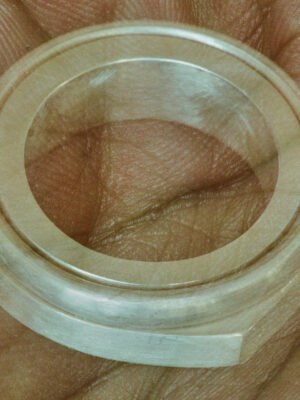
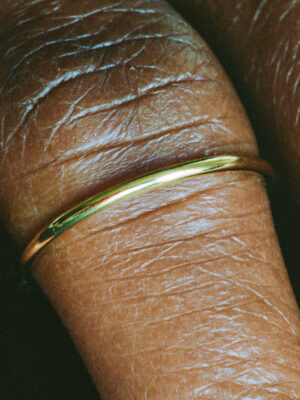
OF YOUR HANDS acts as my first public remark in passing jewellery on purposefully. In moving you to another and them back again. Of which, there is much to say. My hope is that my collection would ‘reward the touch, the hand, of the owner’ (Berger, 1972, p.90) and that this ‘reward’ would generate and advance unity. Gerda Flockinger says that ‘rings are a complete world in themselves’ (17.02.2020). Remarkably, they are our symbol for affection, occasion, identity and heritage; and their completeness is both a visual one and an ethereal one. Rings take you somewhere.
With names like ‘Touching’, ‘Be next to me’, and ‘Together again’, this collection personifies the personal tensions of the times we are all experiencing. With lock down and social distancing because of the Covid-19 pandemic and the Black Lives Matter global human rights movement, ideas of being close to loved ones and sharing in something as a community have perhaps felt like unfulfilled longings. My collection explores connection, whether as a dream or a reality. And to find it adjoining to the consciousness of this moment only emphasises our instinctive aching to be hand in hand.
References Books & other:
Berger, J. (1972). Ways of seeing. London: Penguin Books Ltd.
Bridgman, G. B. (1971). The book of a hundred hands. New York: Dover Publications. Note: reprint of 1st ed., 1920
Current Obsession. (2017) The Cult Issue. Issue #6. Edition 471/500.
Kunz, G. F. (1973). Rings for the Finger. New York: Dover Publications, Inc. Note: later edition of 1st ed., 1917
Lewis, C. S. (1942). The Weight of Glory. London: SPCK. Note: preached originally as a sermon, Oxford, 8th June 1942.
Unger, M. and Van Leeuwen, S. (2017). Jewellery matters. Rotterdam: nai010 publishers.
In Conversations:
Gerda Flockinger. Central Saint Martins. 17th February 2020.
Liz Olver. Central Saint Martins via BB Collaborate. 29th May 2020.
IG: @roanne_sw
